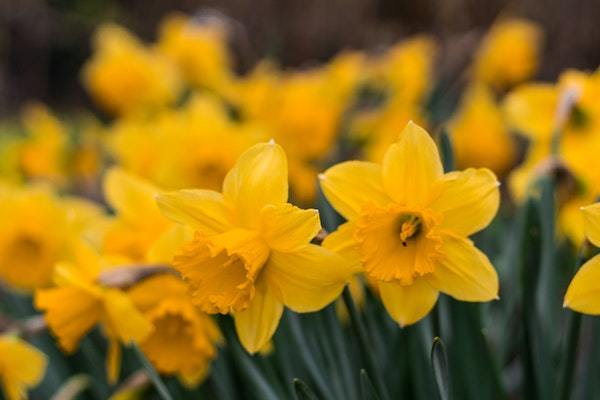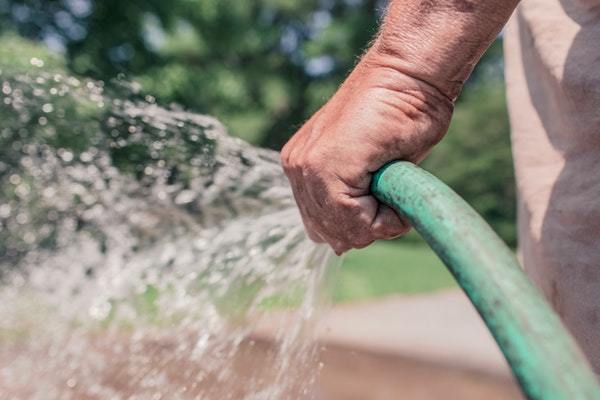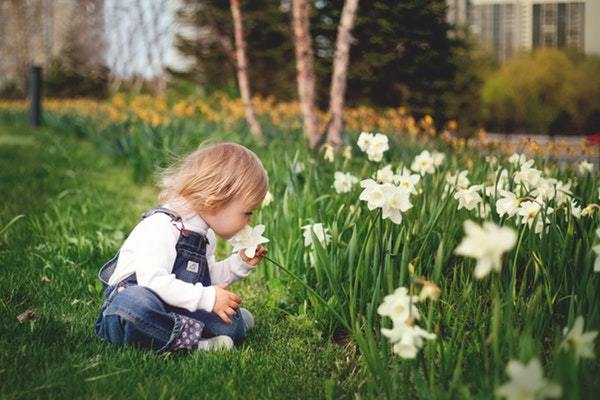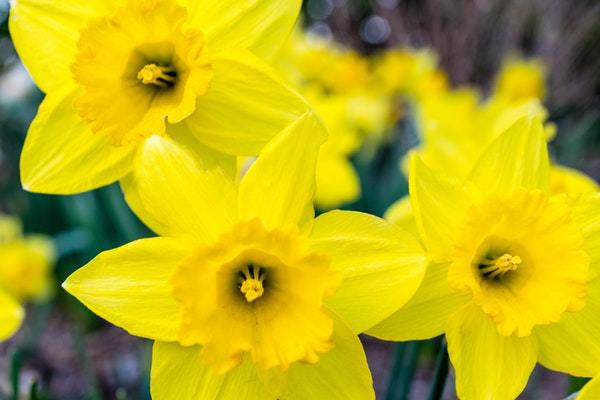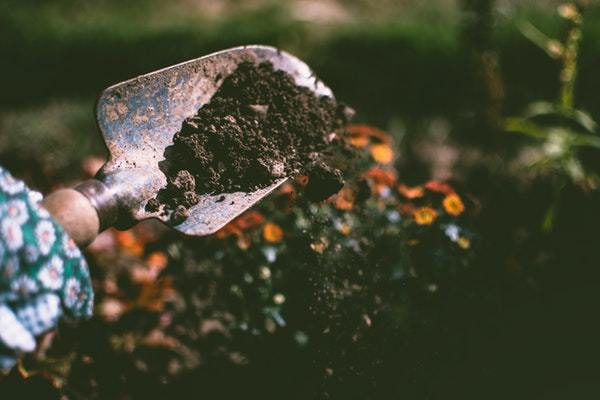Are you thinking about when to plant daffodil bulbs? Are you envisioning fields of cheerful yellow daffodils bobbing their heads in the breeze? Mention daffodils to me and I immediately think of those beautiful fields, or drifts as daffodil enthusiasts would say, of daffodils in Dr. Zhivago.
If you’re a flower lover, you have a reason to want to plant daffodils. They deliver, by far, more flowers for a longer time with less care than any other flower. Planting just 20 bulbs, over time, can become a field of glorious color with a hundred or more blooms.
Daffodils are probably the easiest and most dependable of all flowers to grow and are ideal for beginning gardeners in most regions of the United States. But in order to get the most out of your daffodils, you need to know when to plant daffodil bulbs.
To do that, you have to know what they love.
What Daffodils Love
Daffodils are a hardy and easy perennial and grow in most regions of North America, except for the hottest, wettest areas like south Florida.
While they grow best in cooler areas, zones 7 and lower, there are some varieties that grow in zones 8 and higher. And with just a light green thumb and a little effort, you could grow them indoors no matter where you live.
Their face in the sun
Before you decide when to plant daffodil bulbs, you need to decide where you are going to plant them.
Choose a well-drained, sunny spot to plant your bulbs. Daffodils are phototropic, meaning they grow towards the light. So, for best results plant them facing the south and let those pretty faces get lots of sun time.
Hillsides and raised beds are the best places to plant daffodils as drainage is the key. Keeping your daffodils watered is important, but if your bulbs stay wet, they can rot or develop fungal infections and viruses.
While daffodils can grow near deciduous trees, they will not survive long under evergreen trees and other shrubs. Their sunny natures thrive best when not overshadowed by other trees and plants.
They can survive near deciduous trees because daffodils typically finish flowering by the time deciduous trees leaf out. However, for best results, plant the bulbs outside their drip line.
Image via Pexels
Their toes in the soil
Most daffodils grow best in moderately fertile, well-drained soil. If your soil is comprised mostly of clay, you will want to improve the soil with well-rotted compost, soil amendment, or a plant mix specifically for daffodils.
Before you decide on when to plant daffodil bulbs, you will want to test the pH of your soil. Many local extension offices provide soil pH tests without charge. If yours does not, they are affordable and easily attainable from any of the big box stores or more conveniently from Amazon.
Most daffodils prefer soil that is slightly acidic, with a pH between 6 and 7. If your soil is slightly alkaline, add peat or sphagnum moss. If your soil is highly alkaline, you may need to add sulfur to acidify your soil.
Feed them well
Daffodils won’t require a lot of fertilizer. They are not heavy feeders and are pretty self-sufficient. Feed them when you plant them, then annually once in the fall and once in the spring.
The job of daffodil bulbs in the winter is to send down new roots. To help them accomplish this, plant the bulbs with a balanced fertilizer that has a good dose of phosphorous. Phosphorous isn’t good at working its way down through the ground, so it is important to mix it well into the soil.
Feed the daffodils a granular slow-release 10-10-20 or 5-10-12 bulb fertilizer in the fall. Apply to the surface of the soil according to manufacturer’s instructions, keeping it off the foliage.
Do this before the first predicted hard frost in your area and cover with a two-inch layer of mulch to prevent the fertilizer from washing away.
In the spring, as new foliage begins to emerge from the soil, apply a water-soluble 5-10-10 bulb fertilizer. Water-soluble fertilizers offer a rapid release of nutrients that the plants need.
Image via Pexels
Watch the water, so they don’t spoil
Water daffodils immediately after planting and water them once a week for the first three weeks. It’s is a crucial time to water as the bulbs are sending out their early roots.
After those first few weeks, stop watering and leave them alone until they begin to grow in late winter or early spring. When you see the daffodil leaves peeking out of the soil, it’s time to pay attention again.
Typically, spring rains will provide plenty of moisture, but if your area goes without rain for two or three weeks while daffodils are growing and blooming, get out the hose and give them a drink.
Stop watering once blooms have past and the foliage begins to turn brown. That marks the beginning of their dormancy, and excess water can cause the bulbs to rot.
What Bulbs to Choose
Before knowing when to plant daffodil bulbs, you’re going to have to choose which bulbs to purchase. With over 13,000 distinct daffodil varieties choosing which to grow can be daunting.
The American Daffodil Society recommends visiting not only local, but also the American Daffodil Society’s daffodil shows to see what varieties are available and which daffodils catch your eye. Shows are typically in March, April, and May.
You can also look through catalogs or visit your local garden center. Your local garden centers should have bulbs anytime after August or September.
If you’re ordering from a catalog, you’ll want to order early. It’s not a marketing gimmick; the first orders generally get the best of the pick. It would be disappointing to pour over everything a catalog offers, decide which bulbs you have to have, only to find out they ran out of them.
Image via Pexels
Be Prepared
Keep in mind that daffodils, planted and cared for properly, will herald spring for many years. How you plant them is the first step in that cycle.
You will want to pick up a few tools to make planting your bulbs a bit easier. Some you might find helpful would be a small auger that attaches to a drill, a bulb planter, and if this is your first gardening project, a collection of small tools is a must.
Visit your local garden center or big box store to see what they have available. Or take the easier route and virtually visit Amazon, and search for daffodil planting tools, all while in your PJs. You’re bound to find a lot more than what you need.
Don’t forget gloves; your hands will thank you.
Be a good scout
The first thing to do is to scout out the perfect place. Don’t forget daffodils like their face in the sun and their feet moist but not wet. A site shaded by evergreen trees and shrubs is not where you want to plant your daffodil bulbs.
An important thing to note, daffodils are poisonous to pets so you will want to make sure your pets aren’t munching on them.
Remembering daffodils like a pH of 6 to 7, if your soil doesn’t fall in that range, you will need to amend. If your soil is too alkaline, you will most likely have to add phosphorous, and you will have to mix that well into the soil.
You have scouted the right site and you have the pH addressed, it’s time to loosen the soil and remove any roots or rocks. Give your daffodils as clear a growth path as possible.
Image via Pexels
Get out that shovel
Now comes the time to use some of those tools and play in the dirt. It’s time to dig.
The depth of the hole, or trench, will depend on the size of your bulbs, your soil, and the severity of your winters.
Measure your bulbs from the bottom to the top of the tip and then add two inches. That will be the depth you need to dig your hole or trench. If your bulb measures two inches from bottom to top, add two inches, and you need a hole or trench four inches deep.
However, If your soil is sandy, you will add three inches to the bulbs measurement. If your bulb measures two inches from bottom to top, add three inches, and dig your hole or trench five inches deep.
In areas where winters are severe, you may need to plant your daffodils an inch or two deeper. If you are unsure or if you have any doubts, check with your local extension office.
Remember if you need to add phosphorous mix it well in the soil before you measure the depth.
Carelessness won’t do
And now we plant the bulbs.
If you want daffodils to stand tall and look their best, don’t just drop the bulbs into the ground. Take the time to place the bulbs with their pointy end, or tip, up.
While daffodils will tolerate some crowding, they prefer to be spaced three to six inches apart. Give them room to inhale those first breaths of spring and room to multiply for the coming years.
Water them well after planting and then cover with soil and a layer of mulch. It will look tidy, but more importantly, it will help the soil retain moisture longer.
Now all you have to do is water them for the next three weeks and then wait until spring.
Pay attention; there could be challenges
Fortunately, daffodils are both deer-resistant and rodent-proof. Neither like the taste of bulbs in the narcissus family.
The most common problems for daffodils include a large narcissus bulb fly, bulb scale mite, narcissus nematode, slugs, narcissus basal rot, and other fungal infections and viruses.
It’s important to identify what problem is affecting your daffodils since some are more serious than others, and the treatments correlate.
Basil rot is considered the most serious daffodil bulb disease. The bulbs can become infected in storage or after planting. Spores become widespread and are viable for over 10 years in the soil. Control is very difficult, even commercially.
image via Pexels
When to Plant Daffodil Bulbs
And now we answer the question when to plant daffodil bulbs.
In two words: the fall. The soil needs to have cooled down but still workable.
More specifically, about two to four weeks before the ground freezes. You’ll have to check your frost dates, but you can plan from September to late November, depending on where you live.
A good rule of thumb is to plant bulbs when the average nighttime temperatures in your area are in the 40 to 50-degree Fahrenheit range. At that point, the temperature of the soil should be perfect for tucking bulbs in for their winter’s rest underground.
And now you know when to plant daffodil bulbs. But there’s still more to know.
Preparing for Next Year
Now that you know when to plant daffodil bulbs, it’s time to consider what needs to be done for next year’s blooms.
Your job is to remove spent daffodil flowers after they bloom (deadheading) to encourage the plants to direct energy back into the bulb, rather than setting seed. Allow the foliage to die back naturally before you do any cutting back.
After the blooms are spent and the foliage dies back, the plants use photosynthesis to create and store food to use for next springs blooms. There’s a lot going on under the surface. Those bulbs are busy gathering what they need so they can be even more gorgeous next year.
Daffodils can be like little fertile Myrtles in some areas. If they are in your area, you will most likely want to cull the masses as they multiply.
After the plants have died off and the foliage is brown, you have two choices. You can dig up the clumps immediately, but you will have to store them properly until planting time. Or you can wait until fall to dig them up, but you’ll have to mark the spot so you’ll know where to dig.
Whichever you choose, carefully lift out the clumps and, with equal care, break apart the bulbs. You can leave the smaller bulbs attached to the bigger bulbs when dividing.
If you dig them up immediately, wash the bulbs and let them dry completely for at least a week. Then store them in a cool, dry place in onion sacks or pantyhose. Cool, dry temperatures and good air circulation will keep storage rot to a minimum.
But be aware that bulbs aren’t like seeds. They won’t survive out of the ground indefinitely.
We Planted the Bulbs; Panache Is on the Way
We learned when to plant daffodil bulbs and while we wait for our daffodils to announce the next spring with panache, let’s review the key points.
Every yard in the appropriate growing zones should have daffodils. They are easy to grow, require very little attention, and will brighten the spirits of everyone who sees them.
The important things to remember about when to plant daffodil bulbs are:
- Plant them in the fall
- In soil that has a pH of 6 to 7
- In a sunny and well-drained area
- Deep enough, so there are at least two inches of soil above their pointy top
- And it helps to hum “Lara’s Theme” (from Dr. Zhivago) while planting your daffodil bulbs
According to the Old Farmer’s Almanac, two fun facts about daffodils are: daffodils are March’s birth flower and the daffodil symbolizes unequaled love.
Now that you know when to plant daffodil bulbs, let us know in the comments below, how many and which kind you will plant. Also, let us know how they turned out.
